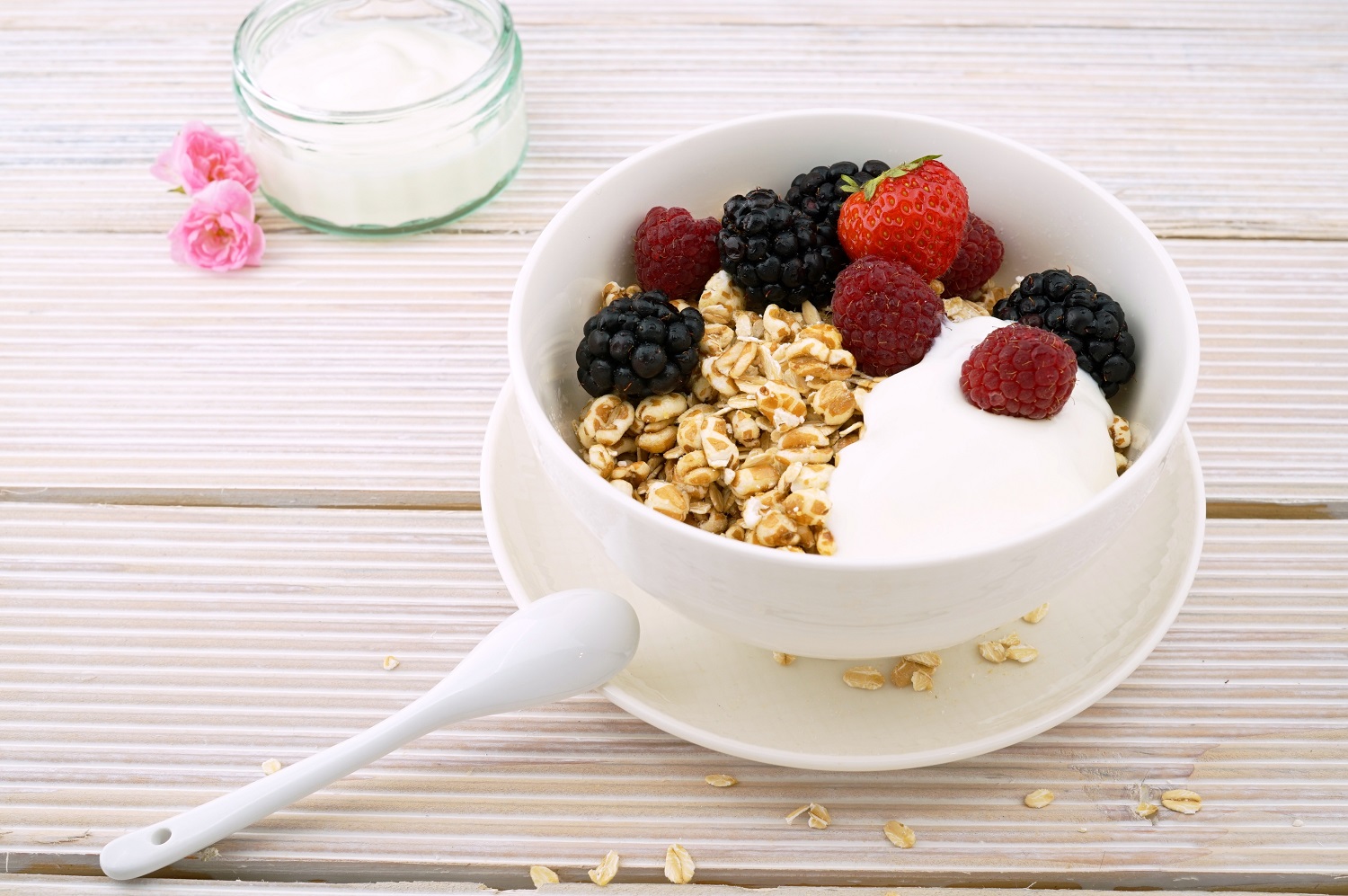The creamy goodness we stuff into our mouths called yogurt, can be so satisfying.
There are even versions that are sugar free, fat free, and with no sugar substitutes.
Yogurt is fermented, so it contains live bacteria. These bacteria provide good intestinal support during digestion.
Plus, Greek yogurt is high in protein. This protein is even “complete”—meaning it contains all the essential amino acids in one serving.
Yogurt often contains a natural form of sugar from milk which is more acceptable than processed sugar.
Even if we eat full fat yogurt, the fat is healthy for you in moderate portions. The fat also helps increase satiety and curbs hunger.
And, yogurt contains calcium which supports strong bones and muscles.
What better product can you eat?

Well, don’t pee yourself out of excitement just yet!
Yogurt CAN be good for you, but it can be as equally damaging.
Here are some helpful tips when choosing the right yogurt:
1. Contains cultures
—many companies have striped their yogurt of the bacteria through processing procedures.
The bacteria are probably the most critical component of yogurt that makes it “healthy.” You may have heard of the term Probiotics. This term refers to the live bacteria that live in fermented foods and support digestion. So, on nutrition labels, look for words like: cultures or cultured, fermentation or fermented, acidophilus, and lactobacillus. These words give indication that the product contains bacteria.
2. Added sugar or sweeteners
—yogurt appeals to many, and especially kids, because its deemed a “healthy” alternative to ice cream.
Unfortunately, this “healthy alternative” is loaded with sugar that makes it no different than ice cream. The sugar and sweeteners disguise the natural tart flavor of plain yogurt. Under the ingredients label, look for added sugars and sweeteners like:
- Sugar
- Molasses (a more natural form of sugar, but still processed)
- Syrups (e.g. high fructose corn syrup)
- Fructose
- Sucrose
- Dextrose
- Maltodextrin
- Honey (though good for you in small amounts, still adds sugar to the product)
- Sucralose (sweetener)
- Aspartame (sweetener)
- Saccharin (sweetener)
- Stevia is becoming more popular, now, as a sugar substitute. Stevia is actually a plant-based sweetener. However, stevia is still processed. This means it will contain chemicals used during processing, and it may be striped of its natural elements. If you want to make plain yogurt more appetizing, add “Whole leaf Stevia”—a less processed option.
- Monk fruit (a relatively unharmful sweetener but still may be processed)
3. Your personal sensitivity.
Yogurt is a dairy product—meaning it contains lactose.
Lactose is a sugar found in the milk of cows and breastmilk. As a baby, our digestive health is different than as an adult. Obviously we couldn’t eat many foods as a baby as we currently do now as adults. The opposite is also true. Most of us do not continue drinking breastmilk. When we were babies, our bodies secreted an enzyme called lactase to help the body breakdown lactose. As we age, we may secrete less lactase (some people maintain sufficient levels of lactase). With chronic lower lactase levels, the body cannot digest lactose effectively. This leads to what is commonly known as lactose intolerance or lactose sensitivity. Common symptoms include:
- Diarrhea
- Nausea
- Bloating
- Gas
- Constipation
- Inflammation across the body
- Sinus issues
- Cramps
- Etc.
Many of us would know if we are lactose intolerant. However, some of the symptoms listed may be subtle. So subtle, in fact, that we do not even correlate the symptom to when we consume dairy.
If you have issues with lactose, then you may try:
- Eating less dairy products
- Try a dairy alternative product
- Take lactase as a supplement
4. Often, “NO FAT YOGURT” means they have added sugar or a sugar substitute!
5. Don’t trust the advertising (i.e. All Natural)! Read the ingredients and nutrition facts!
6. Don’t assume all “health foods” are healthy. CHECK the ingredients!!!
7. Be suspicious of yogurt parfaits.
The “other stuff” added to yogurt (i.e. fruits, syrups, granola, honey, etc.) may not be very healthy, thus decreasing the nutritious value of the parfait. For instance, granola is often loaded with processed sugar. Plus, these extra ingredients increase the calorie count.
8. If you concoct the yogurt parfait yourself, it will be healthier. Then, you can control what goes in and how much.
What is the best option when it comes to yogurt?
The absolute best option for yogurt, if the body is not lactose sensitive or intolerant, is to stay away from preflavored products.
Buy an unflavored plain Greek yogurt (e.g. Fage) and add your own ingredients, like:
- Vanilla extract
- Fruits
- Cinnamon
- Honey
- Nuts
- Rolled oats
- Whole Leaf Stevia
- Tuna (just to make sure you are reading)
Remember, even if you add all kinds of healthy ingredients, keep the amount of food in consideration.
The quantity of food we ingest is directly correlated to our weight.
